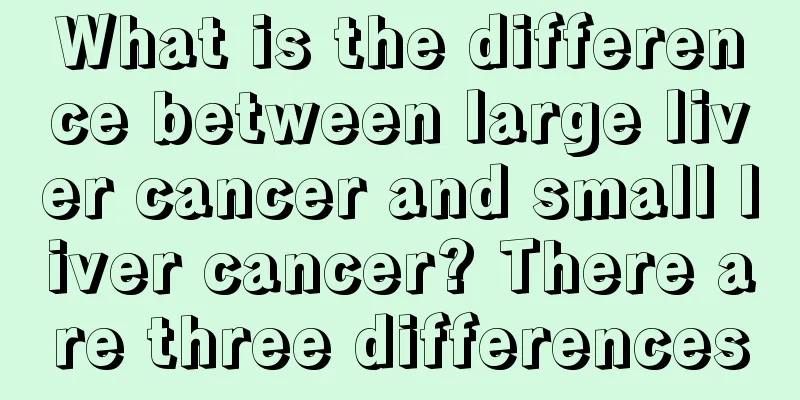What is the difference between large liver cancer and small liver cancer? There are three differences

|
When a patient develops liver cancer, there are many different manifestations, so it is necessary to distinguish clinically and then treat symptomatically. The treatment methods are also very different. So let's take a look at the difference between large liver cancer and small liver cancer? 1. Differentiation by definition <br/>Small liver cancer refers to a lesion with a diameter of no more than 3 cm. There are multiple lesions, the basic number of which is no more than 2, and the sum of the largest diameters is less than 3 cm. Large liver cancer refers to a lesion with a single diameter greater than 5 cm, and the lesion develops in an expansive manner, with capsules and pseudocapsules, which is a giant liver cancer. However, whether it is a large liver cancer or a small liver cancer, it is a tumor, and it is malignant, and its biological characteristics are the same. The onset of large and small liver cancers is related to viral hepatitis, water pollution, etc. Large liver cancer is related to drinking, and small liver cancer is caused by excessive fatigue of the patient. 2. There are differences in clinical manifestations between large and small liver cancers . Small liver cancer is a subclinical and early liver cancer with no obvious symptoms and signs of liver cancer. Symptoms include abdominal distension, fatigue, weight loss, liver pain and body discomfort as well as digestive tract symptoms. Large liver cancer is more malignant than small liver cancer, with obvious body masses and obvious symptoms, such as liver enlargement, liver masses, jaundice, ascites and other significant phenomena. 3. There are differences in the treatment of large and small liver cancers. There are many treatments for small liver cancers, such as surgical treatment, ablation, liver perfusion chemotherapy, embolization, radiotherapy, immunotherapy, Chinese medicine, etc., and radical treatment is the first choice, such as surgical resection. General comprehensive treatment has better efficacy. There are few treatments for large liver cancers. In addition to early surgical resection, non-surgical treatments are the only treatments for middle and late stage large liver cancers. Interventional therapy, radiotherapy, chemotherapy, targeted therapy, etc. are all treatments... |
>>: What are the factors that lead to increased alpha-fetoprotein? There are these six points
Recommend
What are the dangers of making homemade soap
Nowadays, handmade soap is very popular in the ma...
What are the CT signs of gastric cancer
Imaging examinations are often used in the diagno...
The neck suddenly grew fleshy grains
Some small fleshy bumps suddenly grew on my neck....
What are the treatments for rectal tumors
Treatments for rectal tumors include surgery, whi...
Is it really necessary to have a denture after tooth extraction
Everyone has his or her own way of life. In our l...
How to relieve physical fatigue?
The feeling of fatigue is a state that people exp...
Can a paternity test be done while the fetus is still in the womb?
Through the paternity test of the baby, we can ef...
Nasopharyngeal tumors are also closely related to physical constitution
Experts have found that in addition to some relat...
What are the symptoms of bone cancer
As the times progress, people's living standa...
How often should I use body scrub
I believe that all girls love to be beautiful, so...
Who should not eat fish? These four groups of people are not suitable for eating fish
Fish meat not only contains rich protein, essenti...
Symptoms of advanced thyroid cancer
Thyroid cancer is the most common thyroid maligna...
What are the dangers of lung cancer? Lung cancer has 5 major hazards to the body
Patients with liver cancer and ascites often have...
How to do a colorectal cancer check
In recent years, the incidence of colorectal canc...
What to do if the leather of the headboard peels off
Nowadays, many people have replaced their bedside...









